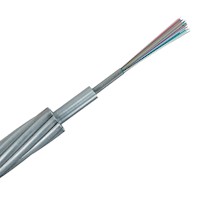The following outline describes the OPGW cable information required to select proper cable attachment hardware and accessories. Most of the cable information can be found in the cable manufacturer's specification – it is recommended that this information be gathered along with the information about the customer’s cable system. Submit this information to technical support to verify proper application.
- CABLE INFORMATION REQUIRED for DEAD-ENDS AND SUSPENSIONS:
- CABLE SPECIFICATIONS/ Cable Specification Sheet Data
- Cable Diameter: Overall outer diameter of the OPGW.
- Cable Construction Strand Configuration: Lay Direction of outer wire strands, Distribution and Location of individual strand materials in a cross-section, Number of strand layers.
- Rated Breaking Strength
- Fault Current
- CABLE SYSTEM
- Maximum Vertical Load at Hardware Attachment
- Line Angles
In addition to the outline above, other products for OPGW applications require further information as listed below.
- ADDITIONAL INFORMATION FOR OTHER HARDWARE ACCESSORIES:
- Splice Closures, Closures, and Domes
- Fiber Count
- Fiber Type
- Fiber Optic Element Configuration
- Type of Buffer Tubes (plastic or stainless steel)
- Core construction (Solid, Aluminum Tube, Aluminum Channel),
- Spiral Vibration Damper
- Span Lengths
- Final Tension at the Average Annual Minimum Temperature (AAMT)
- Terrain
- FITTINGS (Y-Clevis, Clevis Eye, Yoke Plates), Ground Wire, Downlead Cushions, Cable Storage
- Interface at structure
- Type of Structure (Wood Pole, Concrete, Steel, Lattice Tower)
- Ground Wire Material, Bonding Material
- Splice Closures, Closures, and Domes
HARDWARE TESTS:
The IEEE 1138 Test Standard for OPGW includes a series of tests that require suitable hardware to demonstrate system performance. System tests include Tensile Strength, Vibration Test, and Galloping Tests among others. System tests require dead-ends and suspensions that can survive the test parameters and prove cable/hardware compatibility. For multi-layer strand cable construction, special recommendations may be required after review.


